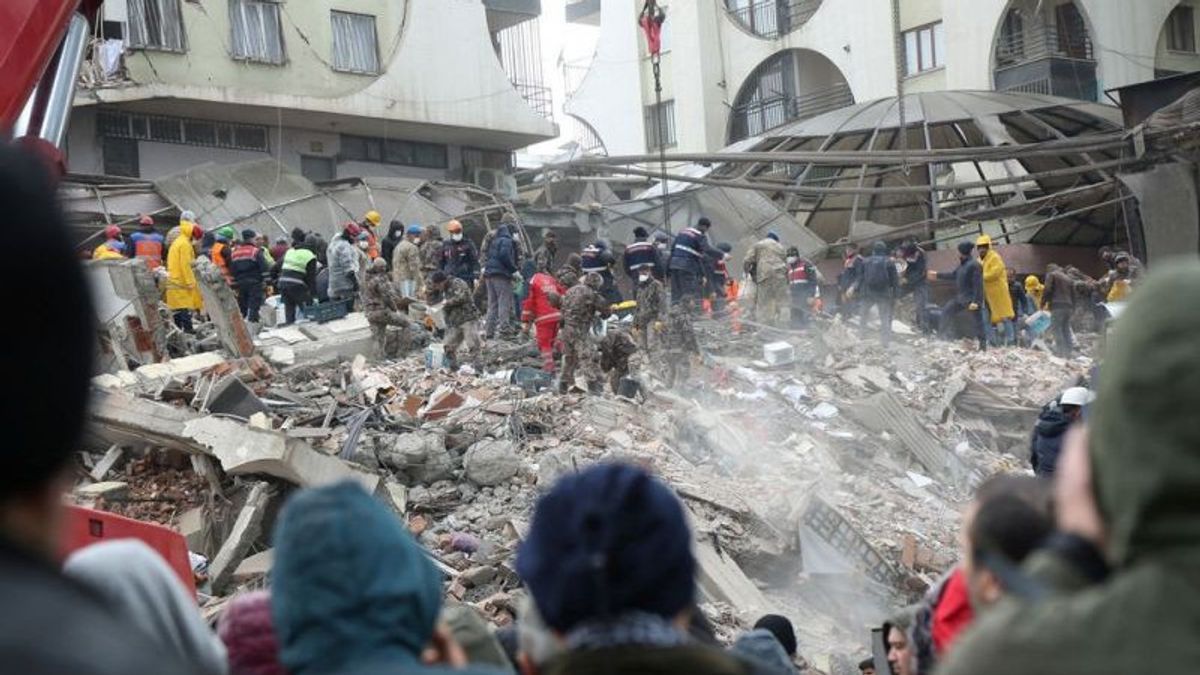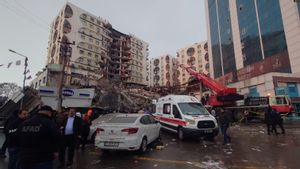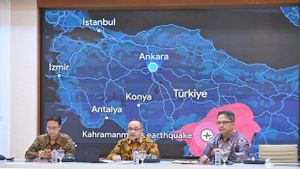YOGYAKARTA - The Anatolian Plate is said to be the cause of the earthquake in Turkey and Syria on Monday, February 2. Learning from this incident, people need to get to know the Anatolian Plate.
Turkey is known as the most earthquake-prone country in the world. This is due to Turkey's geographical conditions which are on the Anatolian plate. So what exactly is the Anatolian plate?
Get to know the Anatolian Plate
The Anatolian Plate is a plate that is in Turkey. These plates are part of a complex and active system of tectonic activity. Its activity is not only in the plate but also affects the surrounding plates.
The existence of the Anatolian Plate is also very important in geological processes such as the formation of several mountains and faults that exist in certain areas. Besides that, the Anatolian Plate is also a tectonic plate that forms a layer of the earth's crust. These plates move slowly and affect the Earth's surface by causing seismic activity. Earthquakes and volcanic activity enter in it.
Several countries are recorded as being on the Anatolian plate, including Turkey and Syria. However, not all of Turkey and Syria are on the Anatolian plate.
There are two main faults that the Turkish Anatolian plate has, namely the North Anatolian fault which is located longitudinally from west to east in Turkey, and the second fault is East Anatolian fault which is located in the southeastern part of Turkey. This fault is thought to be the trigger for the earthquake in Turkey.
The existence of the East Anatolian fault is the final stage of the collision between the Eurasian and Arabian plains that occurred at the end of the mid-Miocene era or approximately 16 to 20 million years ago.
The East Anatolian Fault itself is a straight rift fault. Rock plates that move against each other with the vertical line of the fault causing pressure and impact on plates that move horizontally. This motion then causes an earthquake.
The Anatolian Plate also shares boundaries with several other plates namely the Eurasian Plate, the African Plate, the Arabian Plate, and the Aegean Sea Plate. This region is also known as the North-Anatolian Transform Fault region or the North Anatolian Fault, which is an active right-lateral strike-slip fault in North Anatolia that stretches along the Eurasian Plate and the Anatolian Plate. This position then produces seismic activity that continues to occur.
Quoting the site geo.arizona.edu, the Anatolian plate is one of the geoscience topics that is still being researched. This is because these plates move independently of the surrounding tectonic plates. This plate is also the most seismically active in the world due to the interaction of the plates surrounding Anatolia.
The history of Anatolian plate was formed 34 million years ago (Oligocene). Turkish geologists find petrological facts related to rocks. Besides that, it is also formed through the presence of ophiolite or pieces of oceanic crust and lower mantle layers which are quite broadly distributed and formed by obduction of the Triassic Tethyan Ocean.
VOIR éGALEMENT:
Turki sendiri memang kerap dilanda gempa. Menurut ahli, setiap tahun terjadi gempa rata-rata kurang dari 20 kali dengan magnitudo lebih dari 7,0. Sedangkan gempa yang baru-baru ini terjadi termasuk dalam kejadian luar biasa.
Selain mengenal Lempeng Anatolia, Anda bisa mendapatkan informasi menarik lain di VOI.ID.
The English, Chinese, Japanese, Arabic, and French versions are automatically generated by the AI. So there may still be inaccuracies in translating, please always see Indonesian as our main language. (system supported by DigitalSiber.id)













